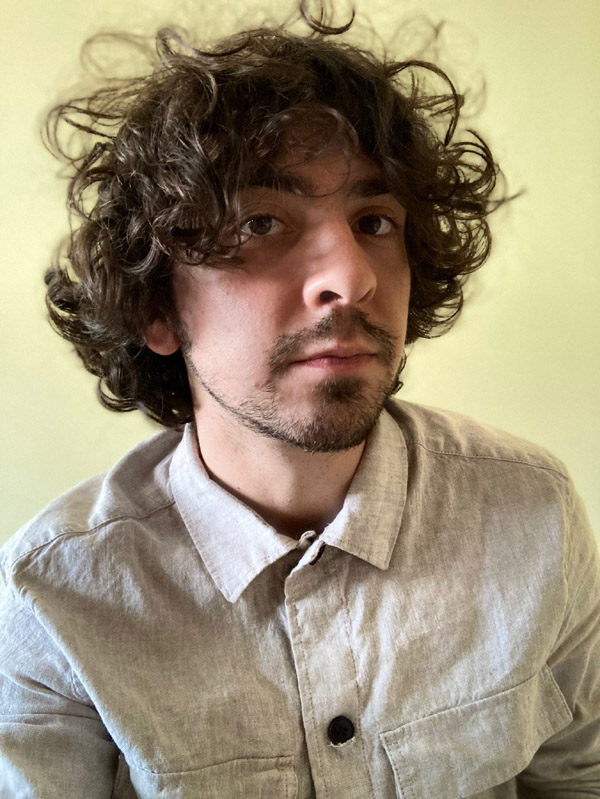“at Ours, we believe in protecting Americans and their environment”, as you can read in the first sections of ‘Ours’, a browser-based conceptual work by New York artist Samuel Marion, produced in 2020 by the platform Rhizome and presented within the digital program of the New Museum. ‘Ours’ has the physiognomy and language of a normal website: the first image that appears is that of a mountain profile with shaded contours, immersed in a mist that accentuates the placid tranquility.
Entering the home, the ridges of the mountains become sharp and in the foreground a small group of tents appears on the plateau below: an introductory image, almost a frame that gives an overview of the field of discursive forces within which ‘Ours’ fits: the wilderness and its narratives, combined with that exploratory impulse, typically Western and Modern, which dresses it with charm and almost mystical beauty.
The critical significance of the project lies precisely in the will to unmask, bringing it to its most explicit consequences, a contradiction behind this veil of Maya: the subtle link between the rhetoric of wilderness and a conservative political ideology, at a time when the need to enhance and protect the environment coincides with the suprematist and eugenic will to protect the population from external ‘agents’ and corruptors. Such apparently forced short circuit is normalized in the near future in which ‘Ours’ is located: a sales site of an outdoor brand – equipment and clothing for outdoor excursions.
Navigating in this fictional domain we constantly deal with a language made of statements and short explanatory texts: a precise brand adverstising strategy that induces an immediate estrangement, suddenly moving from the narrative of sustainable production to an anti-immigration one, culminating in support for the Malthusian initiative: “we’re helping America fighting overpopulation and immigration, ensuring americans get to explore for as long as possible […] This means donating to organizations that are dedicated to building a stronger America: from private border defense groups, organic farms, radical lobbyists, recycling programs, to starting our own program: the Malthusian Initiative”.
In fact, the ultimate purpose of ‘Ours’ is to face the US overpopulation problem through the doctrine, formulated at the end of the eighteenth century, by the English pastor Thomas Robert Malthus, which provides for a rigid adaptation of population growth to the economic resources of a given territory (Malthus, in his 1798 ‘Essay on the Principle of Population’, also called for reduction strategies such as denial of poor assistance, sexual abstinence or postponement of the marital age).
Support for Malthusianism seems to overturn the initial progressive posture, which has become just a mask for radically conservative policies.
In Ours’, with the wilderness becoming a propaganda tool, what must be protected is not the objectively uncontaminated state of nature, but the system of interests that are generated from it. As explained by the artist himself (https://rhizome.org/editorial/2020/aug/31/) concepts such as ‘conservation’ and ‘conservatism’ coexist in a mobile dialectic in which the first term risks slipping into the second, apparently maintaining a positive semantic charge that obscures all the real contradictions of the question: Marion’s work brings to light these ambiguities in which environmentalism, nationalism and green capitalism intersect, and he does so through a format that, at first glance, seems far from any opacity: the e-commerce website.
That of ‘Ours’ is a subtle, non-oppositional critique, which seems to adopt the same subtle language of the narratives it wants to deconstruct, and in which the aesthetic memory of at least three centuries of wilderness images collides with a current and anti-inclusive political tendency, based on the idea of ‘Healthy Boundaries’ (another site’s section).
Just as in the graphic form of the work, nature itself paradoxically seems to assume the role of a backdrop, a set design in the background relegated exclusively to its aesthetic appeal. It remains opaque and, while it seems to allow itself to be neutralized by other interests, it becomes speech. Starting from this basic assumption, Marion tries to deconstruct its foundations: so progress is regress, the physicality of the place is resolved into rhetorical virtuality, the e-commerce space does not make people buy anything.
Once the experience of ‘Ours’ has been completed, it seems that the haze of the first image has never rarefied, but that it has generated a new condensation of doubts and questions, from which alternative stories can arise.
Piermario De Angelis
Info:
For all the images: Samuel Marion, Ours, 2020, screen shot via thisisours.us, courtesy of the artist





Piermario De Angelis was born in Pescara on 06/10/1997. After graduating from high school he moved to Milan to attend the three-year degree course in Arts, Design and Entertainment at the IULM university. He is currently a second year student of the two-year course of Visual Cultures and Curatorial Practices at the Brera Academy of Fine Arts. He is a contributor for ‘Juliet Art Magazine’ and ‘Kabul Magazine’. In 2021 he co-founded, together with other students of the Brera Academy, the non-profit cultural association Genealogie Del Futuro: a reality that addresses socio-political and environmental issues through alternative community building practices, through an artistic and curatorial perspective. His research aims to be an exploration of the critical potential of art and images in relation to the urgencies of contemporaneity.






NO COMMENT